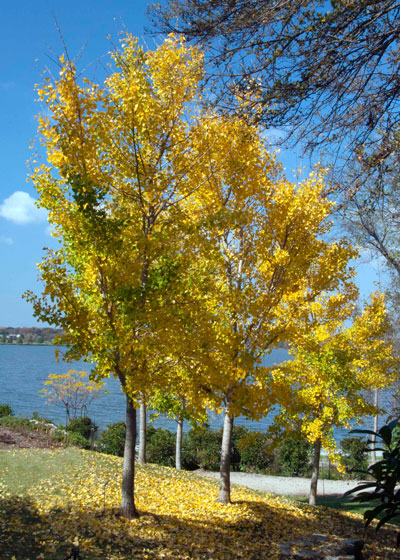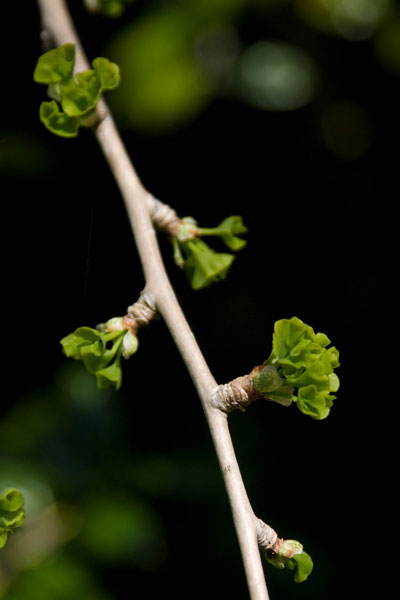Fall Color: Ginkgo
I heard about this tree when I was an undergrad at Texas A&M. How it was a piece of living history: a tree with wide leaves (as opposed to needles). A tree that bears its fruit in cones. Yep. It’s a conifer, but it certainly doesn’t look like one.

Photo: This is the older of our two ‘Autumn Gold’ ginkgoes. It’s 25 years old and about 25 feet tall. It provides a nice fall contrast to the reds of our ‘Bloodgood’ Japanese maple.
Then I saw ginkgoes first hand when I transferred to Ohio State. They’re common in northern gardens, and set against the red maples in fall, they put on a spectacular show.
I learned that you always want to buy a grafted male tree (fruitless), because the ripe, fleshy cones of ginkgo have a putrid aroma. I slipped in the snow on my way to an 8 a.m. horticulture class one November morning at O.S.U. All my classmates chided me, “Found the ginkgoes, did you?” I wore the stench the rest of the day. One doesn’t forget fun like that.

Photo: A relatively new planting of ‘Autumn Gold’ ginkgoes at the Dallas Arboretum.
But rejoice, because nurseries sell only (that I’ve seen) male, grafted ginkgoes, selection ‘Autumn Gold.’ We have two of them, and I’m considering adding more. This is one of my all-time favorite trees for fall color.
Here are the facts…
• Full sun or part shade;
• Medium-sized, to 30 to 40 feet tall and wide;
• Dramatic vase-shaped branching that adds winter interest while the trees are bare;
• Winter-hardy in all parts of Texas north into Canada (Zones 3 – 8);
• Fall color holds for 7 to 10 days (if no strong winds or driving rains), than all falls at same time;
• Slow-growing, so while a good shade tree, probably better as a second or third tree in landscape;
• No significant pest problems.

Photo: Even the new buds next spring will enchant you. There’s nothing ordinary about this exquisite middle-sized shade tree.
